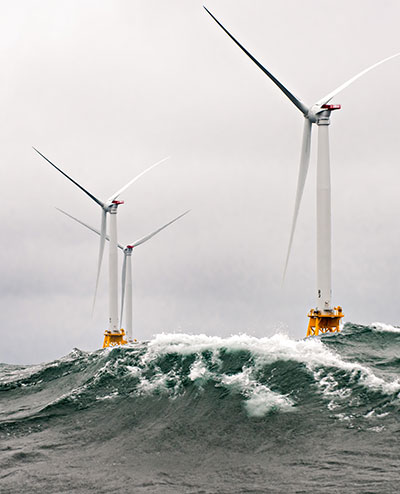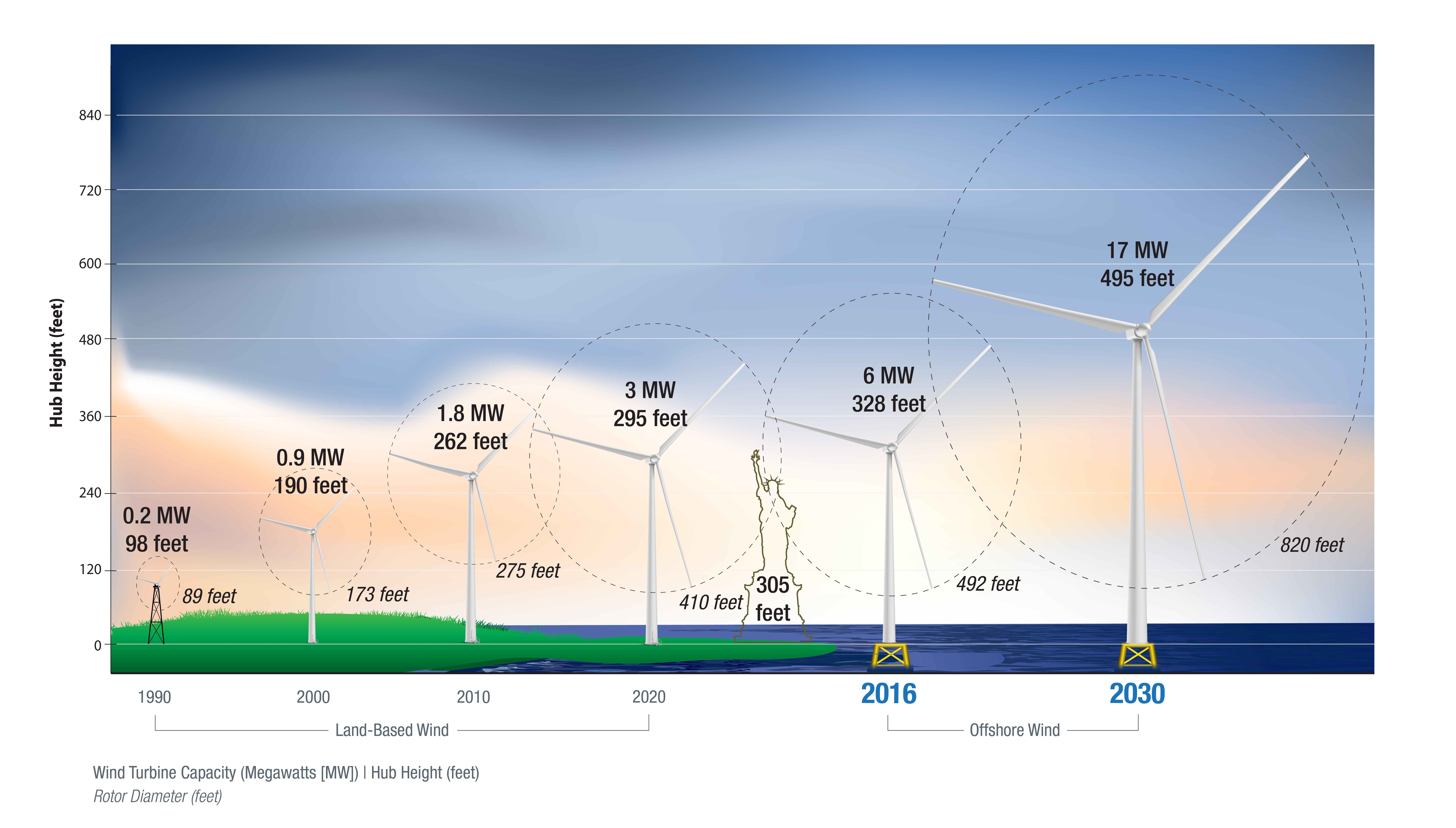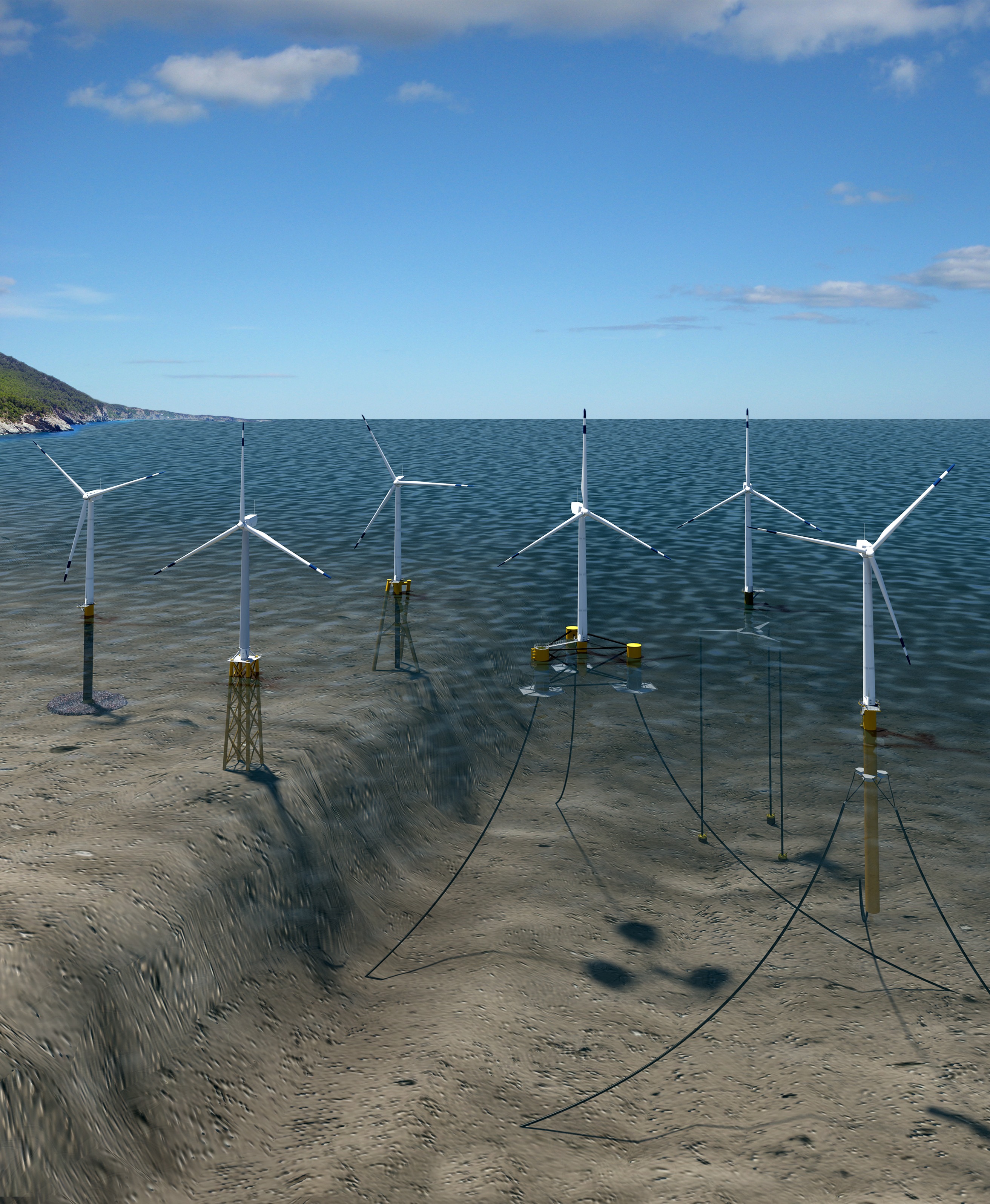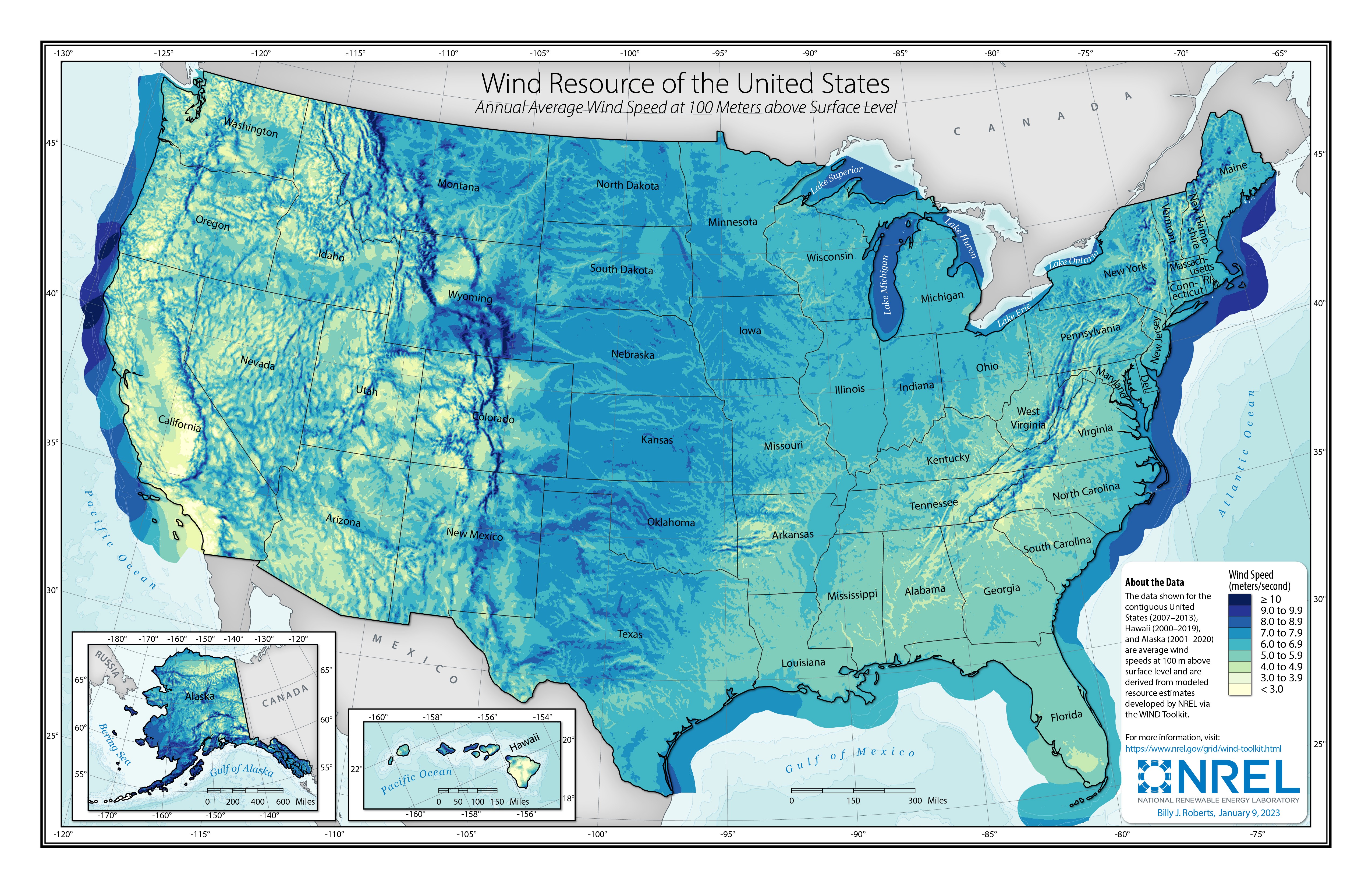Offshore Wind Energy
What Is Offshore Wind Energy?

The Block Island Wind Farm, located off the coast of Rhode Island, is the nation’s first commercial scale offshore wind farm. Photo by Dennis Schroeder, National Renewable Energy Laboratory
Offshore wind energy refers to power captured by wind turbines from winds blowing over bodies of water.
The U.S. Department of Energy's Wind Vision Report quantified the benefits from up to 22 gigawatts of installed offshore wind by 2030 and 86 gigawatts by 2050. In fact, the Wind Vision scenarios show that by 2050, offshore wind energy could be available in all coastal regions nationwide.
Coastal areas represent large population centers (hosting nearly 40% of the U.S. population). They are also proximal to vast offshore wind resources. Offshore wind farms can help supply their energy needs with many advantages, including potential domestic economic development benefits.
The U.S. offshore wind energy industry is poised for exponential growth, with many large installations in various stages of planning, development, and operation. This growth will require an expansion of the domestic supply chain and workforce.
In fact, according to the U.S. Department of Energy’s Offshore Wind Market Report, the U.S. offshore wind energy industry has, as of May 2023, a total of almost 53 gigawatts of potential generating capacity in the development and operational pipeline. Two operational plants on the U.S. East Coast (off Rhode Island and Virginia) provide 42 megawatts of wind energy. And 18 projects in the U.S. offshore pipeline have reached the permitting phase, and 13 states have set their own offshore wind energy goals, totaling over 112 gigawatts by 2050.
Types of Offshore Wind Energy
Offshore wind turbines are, in general, much bigger than land-based wind turbines, because they are not as constrained by infrastructure around them or transportation limitations as their land-based counterparts. Offshore, wind turbine parts are transported by massive barges and erected using giant ship-mounted cranes. This means that offshore wind turbine blades are now 100 meters long (about 330 feet) which is the distance between goal posts of an American football field, and the tower heights have reached 150 meters (nearly 400 feet) tall, which is taller than the Statue of Liberty!
Learn more in our offshore wind energy video series.

Offshore wind turbines are already bigger—and growing—than land-based wind turbines. That is partly due to parts being transported on large ships that are not restrained by roads like trucks are that drive land-based wind turbine blades from manufacturers to wind farm locations. Graphic from Joshua Bauer, National Renewable Energy Laboratory
Fixed-Bottom Offshore Wind Energy
Currently, over 99% of offshore wind turbines are on fixed-bottom support structures in shallow water. This means that the foundation holding the wind turbine’s tower—also called the “support structure”—is secured directly to the seafloor. (Watch our fixed-bottom offshore wind energy overview video and affiliated fixed-bottom Q&A.)
There are several different types of fixed-bottom support structure options, each designed for different seabed and ocean conditions. Fixed-bottom offshore wind turbines are typically installed in water depths up to 60 meters due to the unique design, installation, and cost challenges they pose.
As of 2023, four fixed-bottom offshore wind power projects have been approved along the Atlantic Coast, with two in operation and many more in various stages of planning and development. The domestic supply chain for this industry is growing rapidly.
Floating Offshore Wind Energy

There are several types of offshore wind energy support structure technologies that accommodate various seafloor features, ocean conditions, and water depths. Illustration by Joshua Bauer, NREL"
About two-thirds of the nation’s offshore wind resource potential exists in areas where the water depth is over 60 meters. Therefore, there is a strong incentive to advance the development of what’s known as “floating” offshore wind energy. (Watch our floating offshore wind energy overview video and accompanying floating Q&A.)
Floating offshore wind turbines have buoyant support structures that float on the water and are anchored to the seafloor with long cables referred to as “mooring lines.” This allows floating offshore wind energy projects to be installed at water depths greater than 60 meters.
There are different kinds of floating platform designs and mooring cable systems. They depend on the location, seabed soil composition, floating platform type, and other factors, such as environment and wildlife, and ocean co-use by others, including the fishing industry.
As of 2023, five leases have been awarded off the coast of California for floating offshore wind farms. Investments are needed in the West Coast’s ports and supply chain to help support this new industry.
Research also shows potential for floating offshore wind turbines in the U.S. Great Lakes, which could provide reliable, affordable energy to the surrounding states.
Offshore Wind Energy Transmission
As offshore wind farms develop along U.S. coastlines, the federal government is also helping to plan and support transmission systems that can bring that energy back onto shore to power American homes.
This includes interarray cables, connecting wind turbines to offshore substations, which gathers power from multiple turbines then sends it through an export cable under the seafloor back to the cable landing or "landfall" on shore. There, the power contributes to an onshore substation and travels through powerlines as electricity into homes and businesses.
Check out interactive graphics on how offshore wind energy transmission works from the U.S. Department of Energy's Grid Deployment Office of offshore wind energy transmission and explore the benefits, such as improving U.S. grid reliability, adding good-paying jobs to the economy, increasing domestic energy generation, and offering local comunities tax revenues, workforce development, and other support.
Offshore Wind Energy Support
Offshore wind energy researchers are working to:
- Identify ideal locations and help evaluate the potential for offshore wind farms.
- Design, certify, manufacture, and lower the costs of offshore wind energy technologies, including mooring systems and undersea cables, which have to withstand harsh marine environments, which have to withstand harsh marine environments.
- Improve offshore models, used to evaluate how turbines and infrastructure might perform in marine environments, factoring in wave movement as well as winds, including extreme events, like hurricanes.
- Standardize, regulate, and analyze how other industries (like fishing) and recreation can share use of ocean areas.
- Minimize impacts on the environment and wildlife, including whales.
- Develop a trained and safe workforce.
- Support a domestic supply chain and manfacturing workforce.
- Understand and address impacts on local communities.
- Build a domestic supply chain and ports system for deployment.
- Support communities, manufacturers, developers, and the workforce (view the WINDExchange Offshore Wind Webinar Series)!
To learn about other types of wind energy, visit our land-based wind energy and distributed wind energy pages.
